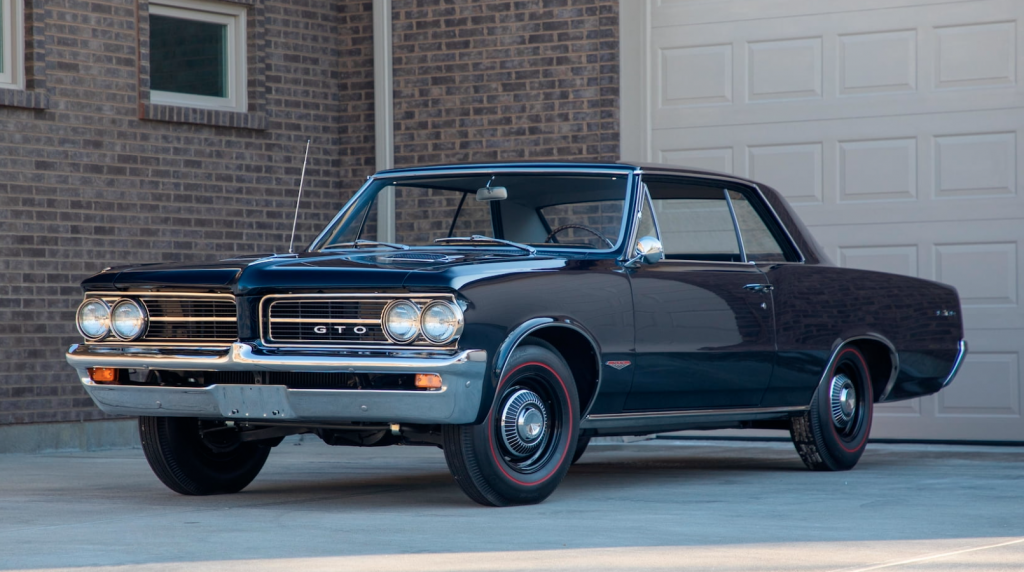
A few vehicles stand out among the rest when you think of the best muscle cars. Shelby's GT500 Super Snake GT500 is undoubtedly the most iconic of all muscle cars. A modern muscle car is the Pontiac Firebird ZL1. A favorite of muscle car enthusiasts is the Plymouth Roadrunner. So which muscle car is the best? It all depends on who you ask! Here are some tips.
Shelby's GT500 Super Snake muscle car is undoubtedly the greatest.
The 1967 Shelby GT500 was the fastest muscle car of all time and the GT500 was a popular choice. Shelby American built a GT500 super-performance version after seeing the GT350's performance in the Le Mans race. Shelby American created a customized engine and exhaust system to enhance the super Snake's performance. The paint scheme featured three Le Mans racing stripes. The Super Snake then made its way to Goodyear, Arizona where it competed in a series races.

Pontiac Firebird ZL1 - A modern muscle car
Pontiac Firebird ZL1 is powered by a 6.2-liter supercharged engine that produces 650 horsepower. A new front splitter, wider fenders and a revised suspension make the car easy to drive on the open roads. The interior features a lot of black and red accents. The ZL1 pays homage to muscle cars of the past.
Ford Mustang Boss 302 is a favourite among muscle car enthusiasts
The 1970 Mustang Boss 302 Mustang Boss 302 is one of Ford’s top performance cars. The legendary muscle car is up for sale on Mecum. It's expected to go for between $110,000- $130,000. This car could be worth more by May 21. Here are some facts about the classic Mustang GT before you bid. It is half an inches lower than the Mustang GT's standard GT. It comes with a larger rear stabilizer rod of 25mm and 19 inch rims. The transmission and engine of this car have been tuned by muscle car professionals. Also, its suspension and shock absorber controls are very advanced.
Plymouth Roadrunner
Plymouth Roadrunner's original car was a high-performance vehicle with a 426 Hemi engine. This engine was enough to get it second place on the street for 1970. Richard Petty drove it and Chrysler refused him the aero bits he needed for the Daytona. Petty decided to jump ship to Ford where he was given the parts. The Superbird was born. It is a muscle car that has become a legend.

Dodge Viper
The Dodge Viper is now the classic. However, this vehicle has been the subject a love/hate relationship. Some admiring its unbridled tenacity, while others throwing it around like a loose cannon. The Viper was a hot rod with very few safety features in its early years. The Vipers of the early years had no air conditioning, exterior door handles, glass windows or airbags.
FAQ
Does it matter where I go to college?
No, not really. There is no difference between colleges in terms of how to get into the automobile industry. But, there are better programs at some schools than others. Look elsewhere if you want something more niche.
What is the best career for an automotive mechanic?
Automotive is an exciting industry filled with opportunities for people who are committed to excellence. Working hard and learning from others is the best way to be successful in this field.
Because you will be spending most of your time communicating with customers and employees, you will need excellent communication skills. You must also be willing and able to travel long distances, which can make it difficult to commute.
Take classes at community colleges or universities if you're interested to work in automotive. Many schools offer programs for students who are interested to learn about auto sales, customer service, or repair.
You should choose to study mechanical engineering if you want to get a degree. A bachelor's degree can be obtained in four years.
Many companies will hire students straight out of college. It's a smart idea to begin looking for work while you have the opportunity to study part-time.
After your education is complete, you will probably need some training in order to become an automotive technician.
This means that you must pass the Automotive Service Excellence exam. This exam covers topics such as engine maintenance, brakes and suspension.
Once you pass the ASE test, your license can be applied for by the National Institute for Automotive Service Excellence.
Private individuals can have their vehicles repaired with a license. In exchange, you'll receive compensation based on the number of services performed.
It is important to remember that not all states require licensing. However, if you plan to work outside your home state, you'll need to obtain a license.
Some states will not issue licenses until an individual has completed certain training. If this is you, you may need another option.
What length is an automotive mechanic apprenticeship?
A three-year apprenticeship in automotive mechanics takes. This includes two years at school and two years working as an apprentice. The first year of training is spent in the trade. This includes theory and practical skills as well as safety procedures. During this time, you'll also learn how to use tools safely and efficiently. After you have completed the first year of training, you will be able to spend an additional year on-the job learning different trades. These years will offer you the opportunity to attend formal classes.
The last year of the program is dedicated to gaining certification and qualifications in the field. These include NVQs (National Vocational Qualifications), which are awarded after passing exams covering specific topics within the industry. There are also HNCs (Higher National Certificates), which cover general subjects like management, business administration, customer service, and more. City & Guilds certificates offer qualifications in certain trades.
To work as an automotive mechanic, do I need a degree? Can I do part-time studies?
It is not essential, but it is helpful. Employers will prefer candidates who have completed a degree. It shows you are dedicated and have worked hard to achieve your goals.
But, this doesn't mean you have to stop working while studying. Many universities permit students to take courses during the summer holidays, and then finish their studies in the fall. Other universities permit students to take classes part-time during the school year.
What information do I need about car mechanics
You don't need to know anything about cars to work as an auto mechanic. All you need to know is how to fix things. This is why most people get started with simple jobs such as changing brake pads or tires. Then they move on to more difficult repairs.
You need to be able read and comprehend diagrams, follow written instructions and adhere to basic principles of good practice. It is also important to know how to determine if parts are damaged or need to be replaced.
It is important to understand that vehicle repairs should only be attempted by those who have received the proper training. This is especially true if you deal with expensive components such as engines or transmissions.
Although you won't have to know much about automobiles, you must be familiar with the basics of mechanical engineering as well as physics. This will include understanding the basic principles of engine operation and brake function.
It is also important to remember that you will need to be able to handle many situations. For example, you may find yourself working on a vehicle that has been involved in a serious accident. You will also need to be able to deal with accidents and breakdowns.
You must also be willing to learn quickly. It is important to be able both to diagnose problems and perform simple maintenance tasks, such as tightening nuts.
Statistics
- According to the BLS, total auto technician employment is expected to exceed 705,000 by 2030. (uti.edu)
- Apprentice mechanics earn significantly less hourly than mechanics who have completed training, with a median wage of approximately $14.50 an hour, according to PayScale. (jobhero.com)
- The U.S. Bureau of Labor Statistics (BLS) reports that the job outlook for automotive service technicians and mechanics is expected to decline by 4% from 2019 to 2029. (indeed.com)
External Links
How To
How to become an Automotive Technician
A technician who works on vehicles is an automotive technician. He/she works at automotive shops, garages or service centers. He/she repairs cars, trucks, motorbikes and snowmobiles for customers. A technician in automotive must be able diagnose and repair problems quickly, safely, accurately, efficiently, and effectively.
An associate degree from a vocational school is required for anyone who wishes to become an automotive technician. After completing this program, he/she will need to pass the National Institute for Automotive Service Excellence's (ASE) certification exam. ASE stands for American Society of Mechanical Engineers. Two sections make up the ASE certification examination. The first section tests the ability to use mechanical knowledge. The second section tests the ability to apply practical skills. To pass the test, you will need to visit an authorized testing location. These locations are available online or through your local automotive dealer.
Before becoming an automotive technician, a candidate must pass the test. This process varies depending on where the applicant lives. Some states require applicants to take a training course while others allow them the freedom to study on their own. Some states require technicians to be licensed immediately upon receiving their license. Other states wait until they have been employed as automotive technicians for at least six month.
An applicant should apply to a local auto shop in order to start their career as an automotive technician. Most new employees work as apprentices after they have been hired. Apprenticeship programs typically last three to four years. A student will learn to repair basic things like changing oil, adjusting brakes or replacing tires. They also learn how spark plugs are cleaned and inspect engine compartments. Some students are able to perform more advanced repairs such as replacing shocks and installing air filters. Schools offer classes during business hours. Some schools also offer evening classes when needed.
Once a student finishes his/her apprenticeship, it is possible to become a Journeyman. Journeymen can spend up to five years learning how major systems work, including transmissions, differentials. They also learn how to adjust steering gear and suspensions. They are also taught how to troubleshoot electrical components and remanufacture engines. Because they have a good understanding of the job and what customers expect, many employers prefer to hire journeymen.
If a candidate successfully passes the required exams and receives a license, he/she might want to consider starting his/her own shop. According to Bureau of Labor Statistics (2010), almost 1.7million automotive mechanic jobs were on the market. This number was expected increase 18% between 2009 - 2020. If a candidate decides to open his/her own shop, he/she should prepare to invest many thousands of dollars in equipment and supplies.
Many factors affect the automotive technician's salary, including location, education, experience, and employer type. On average, an unemployed person could earn $20,000 annually. A person with only a high-school diploma could make around $21,000 annually. Associate's degrees earn approximately $24,000 per annum. Technicians with bachelor's degrees earned about $27,000 per year. A master's degree earns around $32,000 per a year. Salary increases are common, so a professional who earns less than $30,000 now could reasonably expect to earn $40,000 or more in just a few years.